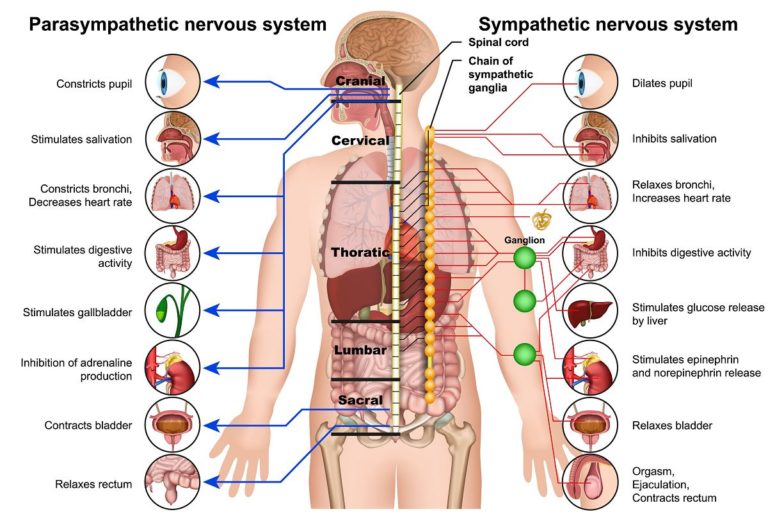A free and anonymous blood values tracker
Start monitoring your blood values today and discover potential health risks
Start monitoring your blood values today and discover potential health risks
Do you need to undergo regular blood tests? This might be necessary if you have diabetes, certain types of cancer, or simply want to monitor your health to understand any changes and trends. Additionally, if you switch doctors, you may want to quickly update them about your blood health status.
Blood anticoagulants are substances or medications that prevent or inhibit blood clot formation, also known as coagulation. They play a crucial role in maintaining proper blood flow and preventing the formation of unwanted blood clots. Anticoagulants are used in various clinical settings to manage and prevent conditions associated with abnormal clotting.
Anticoagulants work through different mechanisms to interfere with the coagulation process. They may target specific factors or enzymes involved in clot formation or inhibit platelet aggregation, ultimately preventing the formation of stable blood clots.
The importance of blood anticoagulants includes:
Upper and Lower Limits:
The effectiveness and safety of anticoagulants are monitored through a blood test called the International Normalized Ratio (INR). The INR is a standardized measurement used to determine the time it takes for a patient's blood to clot compared to a control sample. The target INR range can vary based on the specific condition being treated and the type of anticoagulant used. In general, the therapeutic range for INR is typically between 2.0 and 3.0, but it can be higher for certain conditions or lower for others.
Most Common Unit:
The most common unit used to measure the effectiveness of anticoagulants is the International Normalized Ratio (INR).
Interpreting INR Values:
INR < 2.0): This indicates that the blood is clotting too quickly, which can increase the risk of thrombosis (clot formation).INR 2.0 - 3.0): This is the typical therapeutic range for many anticoagulant therapies and indicates that the blood is clotting at an appropriate rate, reducing the risk of clot formation.INR > 3.0): An INR above the target range suggests that the blood is clotting too slowly, which can increase the risk of bleeding complications.The specific target INR range and the interpretation of values can vary based on the individual patient, their underlying condition, and the type of anticoagulant used.
Sources of information
Basophils are a type of white blood cell involved in the immune response, specifically in allergic reactions and defense against parasites. In blood work, basophils are abbreviated as BASO or BAS in blood count reports, and their unit of measurement is typically reported as a percentage of the total white blood cell count.
In a healthy individual, basophils constitute a small fraction of the total white blood cell count, usually ranging from 0.5% to 1% of the total white blood cells. They are usually reported as a percentage. The absolute basophil count is usually measured in cells per microliter (cells/μL). A normal range for the absolute basophil count is around 20 to 300 cells/μL.
Low basophil values, known as basopenia, are not typically considered clinically significant. They are generally not associated with specific health conditions and are usually inconsequential.
High basophil counts, known as basophilia, can occur due to several factors, including:
Sources of information
Blood plasma is the yellowish fluid component of blood that constitutes approximately 55% of the total blood volume. It is the liquid in which blood cells, platelets, and various substances are suspended. Plasma is crucial for the transportation of nutrients, hormones, antibodies, waste products, and other important components throughout the body.
Blood plasma consists mainly of water, electrolytes (such as sodium, potassium, and chloride), proteins (including albumin, globulins, and fibrinogen), hormones, enzymes, antibodies, nutrients, and waste products. It serves several crucial functions:
Sources of information
Blood types refer to the classification of blood based on the presence or absence of specific antigens on the surface of red blood cells. The most well-known blood typing system is the ABO system, which categorizes blood into four major types: A, B, AB, and O. Additionally, the Rh factor (positive or negative) is another crucial component of blood typing.
Blood types are determined by inherited genetic traits. The presence or absence of specific antigens on red blood cells leads to the categorization of blood types. The ABO system is based on the presence or absence of A and B antigens, while the Rh system focuses on the presence or absence of the Rh antigen.
Blood type is important for several reasons:
Sources of information
Blood coagulation, also known as blood clotting or hemostasis, is a complex physiological process that plays a vital role in preventing excessive bleeding and maintaining the integrity of the circulatory system. It involves a series of well-coordinated steps leading to the formation of a clot at the site of vascular injury.
When a blood vessel is damaged, the process of coagulation is initiated through two main pathways: the intrinsic pathway and the extrinsic pathway. These pathways involve the activation of specific factors and the conversion of proenzymes into enzymes, ultimately leading to the formation of a stable blood clot.
Blood coagulation is important for several reasons:
Normal Ranges:
The normal range for blood coagulation tests can vary depending on the specific test being performed. Common coagulation tests include prothrombin time (PT) and activated partial thromboplastin time (aPTT). For PT, the typical reference range is around 11-13 seconds, while for aPTT, it is approximately 30-40 seconds. These values may vary between different laboratories and should be interpreted in the context of the clinical situation.
Abnormal Values:
Note:
The interpretation of coagulation test results should always be done in consultation with a healthcare provider, as multiple factors can influence coagulation status, and additional tests may be necessary for a comprehensive assessment.
Sources of information
A complete blood count (CBC) is a common laboratory test that provides valuable information about the cellular components of blood. It involves the measurement of various blood cell types and other parameters, offering insights into overall health and potential underlying conditions.
A CBC typically includes the following measurements:
4.5 to 6.0 million cells per microliter (µL) for men and 4.0 to 5.5 million/µL for women.
13.5 to 17.5 grams per deciliter (g/dL) for men and 12.0 to 15.5 g/dL for women.
38.3% to 48.6% for men and 35.5% to 44.9% for women.
4,000 to 11,000/µL.
150,000 to 450,000/µL.
A CBC is important for several reasons:
Sources of information
Eosinophils are a type of white blood cell involved in the immune response against parasites and in allergic reactions. In blood work, eosinophils are often abbreviated as EOS or EO in blood count reports, and their unit of measurement is typically reported as a percentage of the total white blood cell count.
Eosinophil levels are typically measured as a percentage of total white blood cells in a complete blood count (CBC) or as an absolute count in cells per microliter (µL) of blood. The normal reference range for eosinophils is approximately 0.0% to 4.0% of the total white blood cell count or 0 to 450 eosinophils per µL.
Low eosinophil values, known as eosinopenia, are generally not considered significant and are not associated with specific health conditions.
High eosinophil counts, known as eosinophilia, can occur due to several factors, including:
Sources of information
Erythroid cells, also known as red blood cells (RBCs), are specialized cells in the bloodstream responsible for transporting oxygen to tissues and organs throughout the body. In blood work, erythroid cells are often abbreviated as RBC, and their unit of measurement is typically reported as the number of cells per microliter (10^6/μL) or as a concentration in grams per deciliter (g/dL).
The normal range for erythroid cell counts and hemoglobin levels in adults can vary slightly, but generally, the reference ranges are:
4.5 - 5.5 x 10^6/μL).12 - 16 g/dL) for females and 13.5 to 17.5 grams per deciliter (13.5 - 17.5 g/dL) for males.Low erythroid cell counts or hemoglobin levels, known as anemia, can be caused by various factors, including:
High erythroid cell counts or hemoglobin levels can be observed in conditions such as:
Sources of information
Hematocrit is a measure of the volume of red blood cells (RBCs) in relation to the total volume of blood. It is expressed as a percentage and represents the proportion of blood occupied by RBCs.
Hematocrit is determined by separating the cellular components (primarily RBCs) from the liquid component (plasma) of blood. It is obtained by centrifuging a blood sample and measuring the height of the RBC layer compared to the total height of the blood sample.
Hematocrit is important for several reasons:
Measurement and Interpretation:
52%, while for adult women, it's around 47%. Values above this range may indicate polycythemia or dehydration.36% for adult women. Values below this range may suggest anemia or overhydration.Most Common Unit: Hematocrit is most commonly expressed as a percentage (%) of the total blood volume.
Abnormal values, whether high or low, often require further investigation and may be indicative of underlying medical conditions or imbalances in blood composition.
Sources of information
Hemoglobin is a protein found in red blood cells (erythrocytes) that is responsible for transporting oxygen from the lungs to various tissues and organs in the body. It is an essential component of the circulatory system and plays a crucial role in maintaining overall health and vitality.
Hemoglobin molecules are composed of four protein chains called globins, each of which is bound to a heme group. The heme group contains iron, which enables hemoglobin to bind and carry oxygen molecules. When oxygen-rich blood reaches the capillaries in the tissues, hemoglobin releases the oxygen, allowing it to be used by cells for various metabolic processes.
The importance of hemoglobin lies in its role in oxygen transport and delivery to body tissues. Some key points about its significance include:
Measurement and Normal Values:
Hemoglobin is typically measured in grams per deciliter (g/dL) of blood. The normal range can vary slightly depending on factors like age, sex, and health status. However, a general reference range for adults is:
13.8 to 17.2 g/dL
12.1 to 15.1 g/dL
Values outside of this range can have various clinical implications:
Sources of information
Leukocytes, commonly known as white blood cells (WBCs), are a crucial component of the immune system and are essential for the body's defense against infections and diseases. They are a diverse group of cells that play various roles in recognizing, attacking, and eliminating pathogens, foreign substances, and abnormal cells.
White blood cells are produced in the bone marrow and circulate in the bloodstream and lymphatic system. There are different types of leukocytes, each with its unique functions and characteristics, including:
White blood cells are crucial for several reasons:
Normal Ranges:
White blood cell counts are typically reported in one of two units: cells per microliter (cells/µL) or cells per liter (cells/L). The normal range for white blood cell counts can vary slightly between laboratories, but it's generally around 4,000 to 11,000 cells/µL or 4.0 to 11.0 x 10^9 cells/L.
Interpretation:
Sources of information
Lymphocytes are a type of white blood cell, also known as leukocytes, that are a fundamental part of the immune system. They play a critical role in defending the body against infections and diseases. Lymphocytes are an essential component of the adaptive immune system, which provides specific and long-lasting protection against pathogens.
Lymphocytes can be classified into three main types:
Lymphocytes are crucial for several reasons:
Normal Ranges and Units:
The normal reference ranges for lymphocyte counts may vary slightly between laboratories and can depend on factors such as the individual's age. In adults, the typical range for lymphocytes is approximately 20% to 40% of the total white blood cell count, or around 1,000 to 4,000 lymphocytes per microliter (µL) of blood. The units used for lymphocyte counts are typically cells per microliter (µL) or cells per liter (L).
Interpretation of Values:
Sources of information
Monocytes are a type of white blood cell (leukocyte) that plays a crucial role in the immune system's defense against infections and other diseases. They are part of the innate immune system and function as phagocytes, which means they have the ability to engulf and digest pathogens, dead cells, and other debris in the body.
Monocytes are vital for several reasons:
Normal Values and Units:
Monocyte levels are typically reported as a percentage (%) of total white blood cells or as an absolute count in cells per microliter (µL). The reference range for monocytes in a typical complete blood count (CBC) is as follows:
2% to 9%
0.2 to 0.8 x 10^9/L (cells per microliter)Interpretation:
Sources of information
Neutrophils are a type of white blood cell, also known as neutrophil granulocytes, that play a pivotal role in the immune system's response to infections. They are the most abundant type of white blood cells and are classified as granulocytes due to the presence of granules in their cytoplasm, which contain various enzymes and antimicrobial substances. Neutrophils are part of the body's innate immune system, providing a rapid and nonspecific defense against a wide range of pathogens, primarily bacteria and fungi.
Importance of Neutrophils:
Normal Ranges:
The normal range for neutrophil counts is typically between 40% and 75% of the total white blood cell count.
Neutrophil counts are usually reported in absolute terms, with a normal range of 2,000 to 7,500 neutrophils per microliter (10^9/L).
Abnormal Values:
Sources of information
Thrombocytes, also referred to as platelets, are small, irregularly-shaped blood cells that play a crucial role in the process of blood clotting, known as hemostasis.
In the context of blood work, thrombocytes are commonly abbreviated as PLT, and their unit of measurement is typically reported as platelets per microliter of blood (10^9/L or thousand/μL).
The normal range for platelet counts in a healthy individual typically falls between 150,000 and 450,000 platelets per microliter of blood (150-450 x 10^9/L). Deviations from this range may indicate certain medical conditions or factors that impact platelet production, survival, or consumption.
Low platelet counts, referred to as thrombocytopenia, can be attributed to various factors, including:
High platelet counts, known as thrombocytosis, can be caused by various factors, including:
Sources of information
Use the search field below to look up symptoms, medical terms, and more.
Exciting news! The alpha version of our blood tracker is now available. Whether you're a new user or already part of our community, it's time to take control of your health. Click the button below to start tracking now or continue tracking if you're an existing user.
Discover the latest news relevant to blood health in this section. More news >

There is a critical shortage of certain vials used to collect samples for blood cultures, the US Centers for Disease Control and Prevention warned health care providers on Tuesday. These tests help … [+3905 chars]
read more >
The hottest drug on the market might also be an unexpected brain booster. In a study published this month, scientists found evidence that semaglutidethe active ingredient in Ozempic and Wegovycan hav… [+3840 chars]
read more >
Scientists from the University of California, San Francisco are claiming to have discovered a novel autoimmune disorder that keeps precious vitamin B12 from reaching our brains. The condition seems t… [+5348 chars]
read more >
Scientists are starting to unravel the secrets to a golden pooping routine. In a new study this week, a team has found evidence that the frequency of a person’s bowel movements can affect their long-… [+4767 chars]
read more >
It’s the sort of buzzwordy phrase that you would expect to hear at a business seminar: social jetlag. But it’s actually a well-studied phenomenon that might explain why you or your night owl friends … [+3679 chars]
read more >
Doctors have apparently cured another person of HIV using a bone marrow transplant. Unlike previous cases, however, the patient was cured without needing donated stem cells from someone genetically i… [+4277 chars]
read more >
io9 is proud to present fiction from LIGHTSPEED MAGAZINE. Once a month, we feature a story from LIGHTSPEEDs current issue. This months selection is The Last Lucid Day by Dominique Dickey. Enjoy! (You… [+18277 chars]
read more >
By Marie-Louise Connolly, Health correspondent Maria Austin was diagnosed with cancer in January A west Belfast woman says she was lucky to have been given time to freeze her eggs before starting c… [+4704 chars]
read more >
A swarm of mosquitoes, the insects that spread malaria when they drink blood Millions of lives are at risk unless urgent and radical action is taken to stop drug-resistant malaria spreading in Afric… [+3542 chars]
read more >In this section, I share links to products, books, and courses that I've found interesting. Please note that these are affiliate marketing links, which means I earn a small commission if you make a purchase through them. I haven't personally tried these products, so I can't guarantee their effectiveness. However, I believe they could be helpful to you and wanted to present them in case they interest you.

These are people who simply were not prepared to risk the serious downside of HCT. Nor were they willing to endure a lifetime of blood-giving – with all the complications that involve, especially as we grow older. This program explains how to treat the intense itching and pain during shingles – and completely side-stepped horrible post-shingles nerve pain while avoiding a repeat attack later. There is also a money back guarantee.
read more >The Home Doctor - Practical medicine for every household - is a 304 page doctor written and approved guide on how to manage most health situations when help is not on the way. Dr. Maybell Nieves - head surgeon of the Unit of Breast Pathology and general surgeon at Caracas University Hospital in Venezuela, with over 10 years of experience in the operating room. She studied at the prestigious European Institute of Oncology in Milan, Italy. The author is known for developing new, ingenious methods of treating patients after Venezuela's economy collapsed and hospitals and pharmacies ran out of medicines, supplies, electricity and running water. The methods she developed and pioneered are now studied and applied in conflict zones all over the world.
read more >
Hear from the world's top doctors and Nobel Prize winners and learn how to quickly lower your blood sugar naturally and eliminate the need for prescription drugs and insulin injections.

Are you looking to learn anatomy and physiology? You're about to discover the most spectacular gold mine of human anatomy and physiology materials and diagrams ever created for commercial sale! everything you'll ever need to know about human anatomy, physiology and drug therapy complete with diagrams, courses, lesson plans, quizzes and solutions. It promises that you could master over 15 years of anatomy and physiology knowledge in just 7 days!
read more >